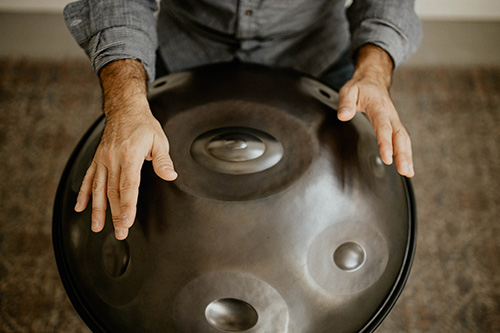The history of the handpan.
 A handpan is a mesmerizing musical instrument with a lenticular shape with two steel half-shells glued together, resembling a UFO or turtle shell.
A handpan is a mesmerizing musical instrument with a lenticular shape with two steel half-shells glued together, resembling a UFO or turtle shell.
As handcrafted instruments, each handpan is unique. Handpan’s sound is often described as ethereal and mysterious.
Most people agree that the founders of the handpan were by Swiss artists Felix Rohner and Sabina Scharer in 2000. The two were highly skilled steelpan makers, and they crafted a new instrument which they christened the “Hang,” (meaning hand).
Handpans, also commonly and wrongly called hang, hang drums, pantam, space drums, and hand drums, are made of two bowls of steel glued together. The notes are located on the top of the bowls, with the center note being in the middle, which is called the Ding. Around the Ding, the tone-field is located where you find the harmonized notes.
All of the note circles feature three frequencies inside them with the fundamental note, the compound 5th, and the octave of the fundamental note. If you have a D note on your handpan, for example, that means the note circle has the D note as the core, A as the fifth, and another D which is an octave higher than the core D. With the two extra harmonics tuned into a note, the instrument sounds richer, fuller and more powerful.
